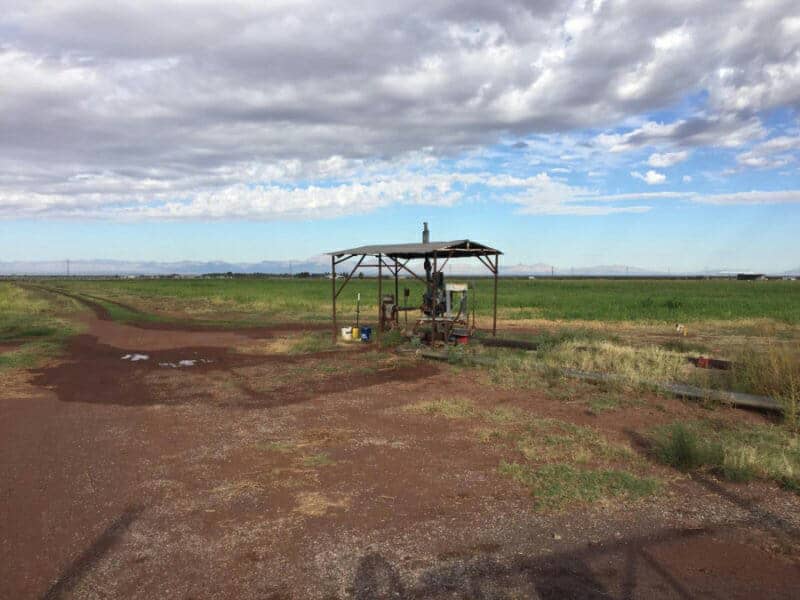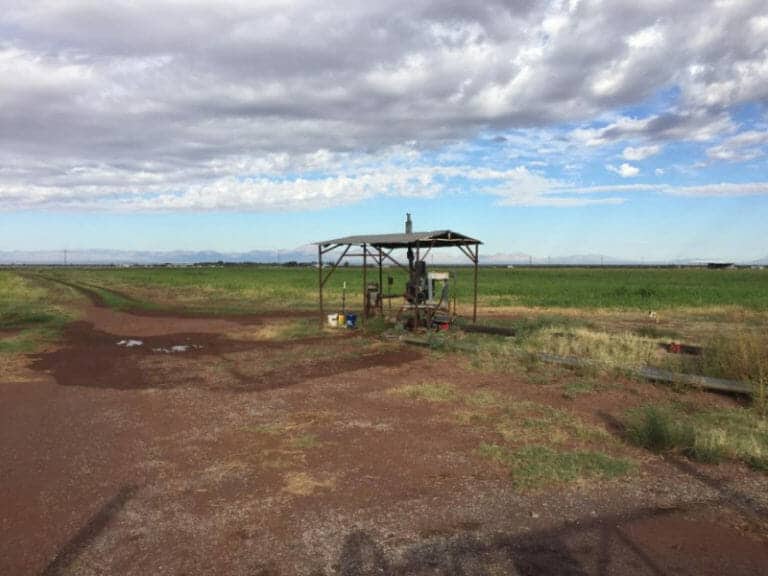Photo: A groundwater well near Estancia, New Mexico. Credit: Debra Perrone
The U.S. groundwater supply is smaller than originally thought, according to a new research study that includes a University of Arizona hydrologist.
The study provides important insights into the depths of underground fresh and brackish water in some of the most prominent sedimentary basins across the U.S.
The research by scientists from the University of Saskatchewan, the UA and the University of California, Santa Barbara was published Nov. 14 in Environmental Research Letters.
“We found that potable groundwater supplies in the U.S. do not go as deep as previously reported, meaning there is less groundwater for human and agricultural uses,” said Jennifer McIntosh, a University of Arizona Distinguished Scholar and professor of hydrology and atmospheric sciences.
Drilling deeper wells may not be a good long-term solution to compensate for increasing demands on groundwater.
“We show that there is potential for contamination of deep fresh and brackish water in areas where the oil and gas industry injects wastewaters into — or in close depth proximity to — these aquifers,” McIntosh said. “These potable water supplies are already being used up from the ‘bottom up’ by oil and gas activities.
“Groundwater is the primary source of domestic water supply for about half of the people living in the U.S. About 40 percent of all of the water used in the U.S. for irrigated agriculture comes from groundwater,” McIntosh said. “In Tucson, Arizona, about half of our drinking water comes from groundwater.”
Many rural areas in Arizona and other parts of the U.S. rely exclusively on groundwater for both agricultural and domestic use, she said.
To find out how deep potable groundwater extends, the scientists analyzed water chemistry data from the U.S. Geological Survey for 28 key sedimentary basins in the U.S. and looked at the correlation between water well depths and the depth to the transition between fresh and brackish water.
Until now, the focus has been on monitoring dropping water tables, said lead author Grant Ferguson, principal investigator of the University of Saskatchewan-led Global Water Futures project.
In parts of the western U.S. known to geologists as the Basin and Range Province, fresh groundwater extends down an average of 3,400 feet, McIntosh said. The province includes Nevada, southern Arizona and New Mexico, and extends into parts of California, Utah, Oregon and Idaho.
The new research found the average depth of transition from fresh to brackish groundwater in the U.S. overall is about […]
Full article: US groundwater in peril: Potable supply less than thought
More about Groundwater in the USA:
New Estimate Finds Less Fresh Groundwater in U.S. Than Previously Assumed
Benefits of Groundwater Recharge Demonstrated in Lodi Vineyards
“They lied to us” about contaminated groundwater, say residents near Ford’s Livonia plant
California Court Finds Public Trust Doctrine Applies to State Groundwater Resources
Farmers drawing groundwater from Ogallala Aquifer faster than nature replaces it
Global coal industry using as much water as a billion people each year



